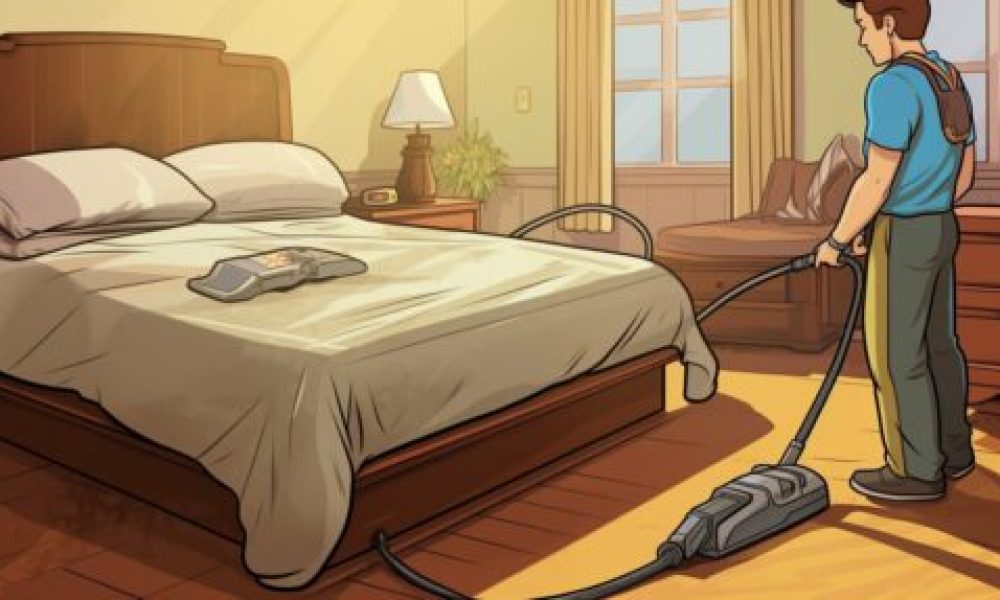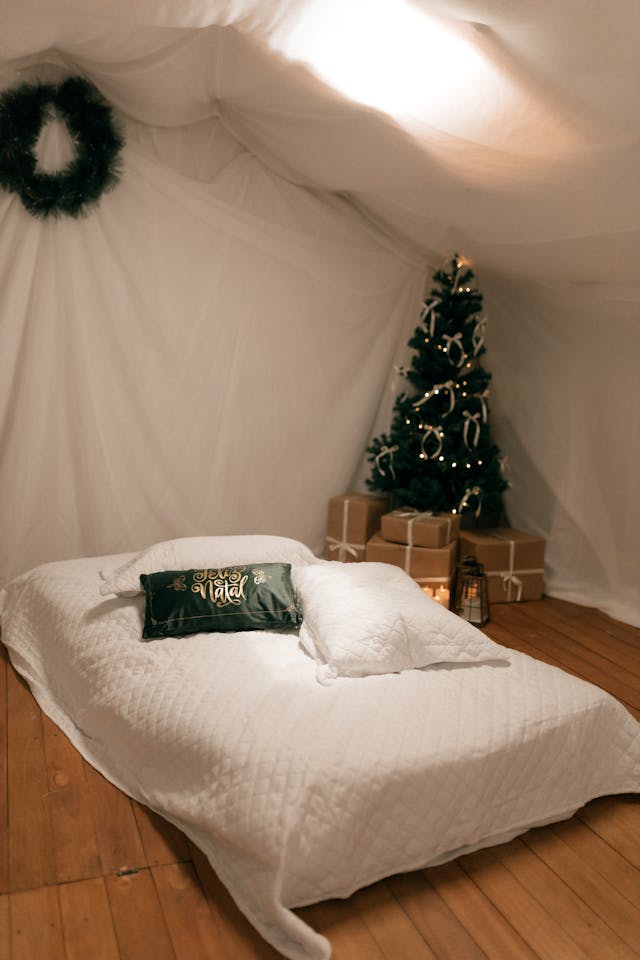Care and Maintain Bedroom Carpets Tips (Complete Guide)
A soft bedroom carpet sets the tone for rest and warmth—if you keep it clean and cared for. These care and maintain bedroom carpets tips show you exactly how to prevent stains, reduce allergens, and extend the life of your carpet with simple, proven routines.
Key Takeaways: Care and Maintain Bedroom Carpets Tips
- Vacuum smart and often: hit high-traffic lanes 2–3 times weekly; edges and under furniture weekly.
- Act fast on spills: blot (don’t rub), then treat; schedule pro hot-water extraction every 12–18 months.
- Prevent wear: rotate furniture, use coasters/rugs, and diffuse strong sunlight to curb fading.
- Set a routine: pair weekly vacuuming with monthly spot checks and seasonal refreshes.
- At least one tip includes the exact phrase: care and maintain bedroom carpets tips.
1) Regular Vacuuming (The Everyday Win)
Short answer: frequent, thorough vacuuming preserves fibers, cuts allergens, and keeps carpets looking new. It’s the highest-impact daily habit.
Treat vacuuming like toothbrushing for your carpet. Tackle high-traffic paths two or three times a week and give the entire room a weekly pass. Use a vacuum with strong suction, a rotating brush (or adjustable beater bar for different pile heights), and a HEPA filter to capture fine dust and dander. Change bags/empty canisters before they’re half full to maintain airflow.
Work in overlapping passes, then switch directions to lift crushed pile from different angles. Finish around baseboards, edges, and under the bed—dust and grit settle where the eye can’t see.
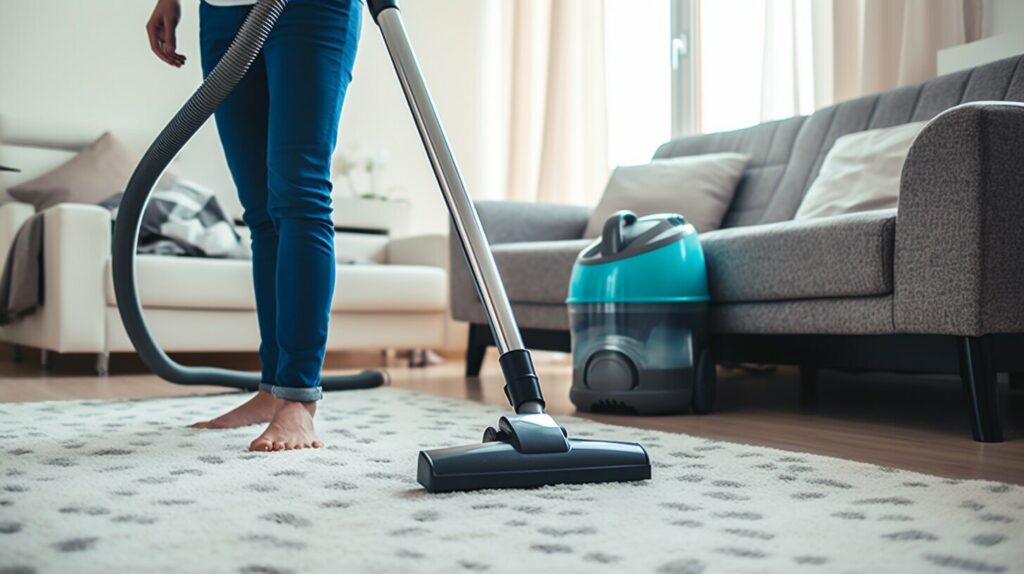
2) Prompt Spill Cleanup (Blot, Don’t Rub)
Short answer: blot immediately, treat from the outside in, and avoid scrubbing so stains don’t spread or set.
For most fresh spills, blot with a clean, white cloth. Mix a small amount of mild dish soap with warm water and dab gently. Work from the perimeter toward the center to keep the spot contained. For coffee, wine, or pet accidents, use an enzyme-based cleaner suitable for your carpet fibers and follow label instructions.
For deeper guidance on safe stain removal and drying between steps, see Better Homes & Gardens’ carpet stain playbook
(how to get stains out of carpet). :contentReference[oaicite:0]{index=0}
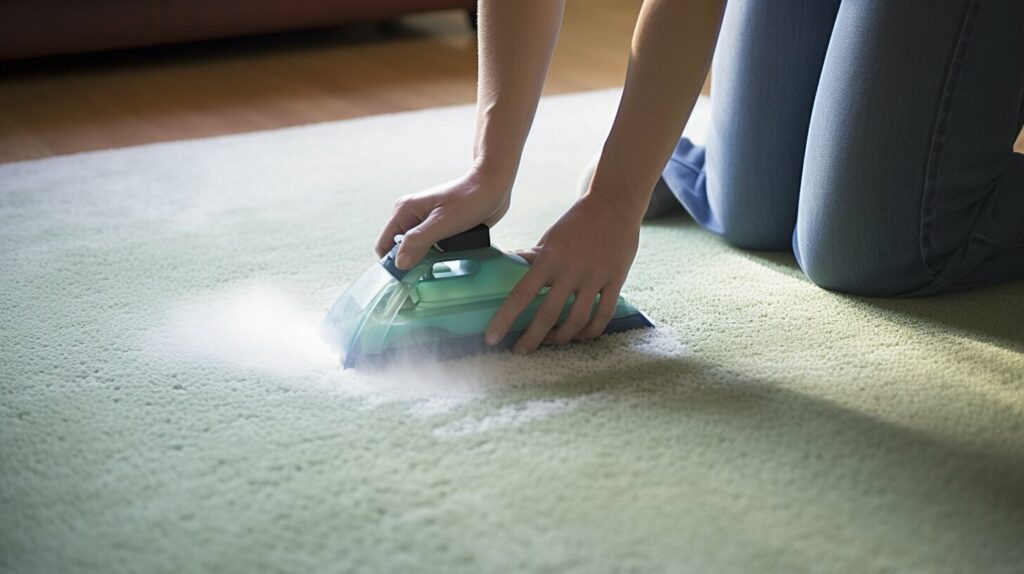
3) Deep Cleaning Schedule (DIY vs. Professional)
Short answer: DIY refreshes are great, but periodic professional hot-water extraction removes embedded soil and allergens you can’t reach.
Plan a professional deep clean every 12–18 months—or sooner if you have pets, allergies, or heavy traffic. Hot-water extraction (often called “steam cleaning”) flushes soil from deep in the pile and then vacuums it away. After any wet method, speed drying with fans and open windows and keep foot traffic off until fully dry.
For step-by-step DIY machine use and safe drying times, Better Homes & Gardens outlines the full process
(how to use a carpet cleaner). The U.S. EPA’s IAQ materials also endorse hot-water extraction as part of regular carpet care programs
(EPA IAQ Coordinator’s Guide). :contentReference[oaicite:1]{index=1}
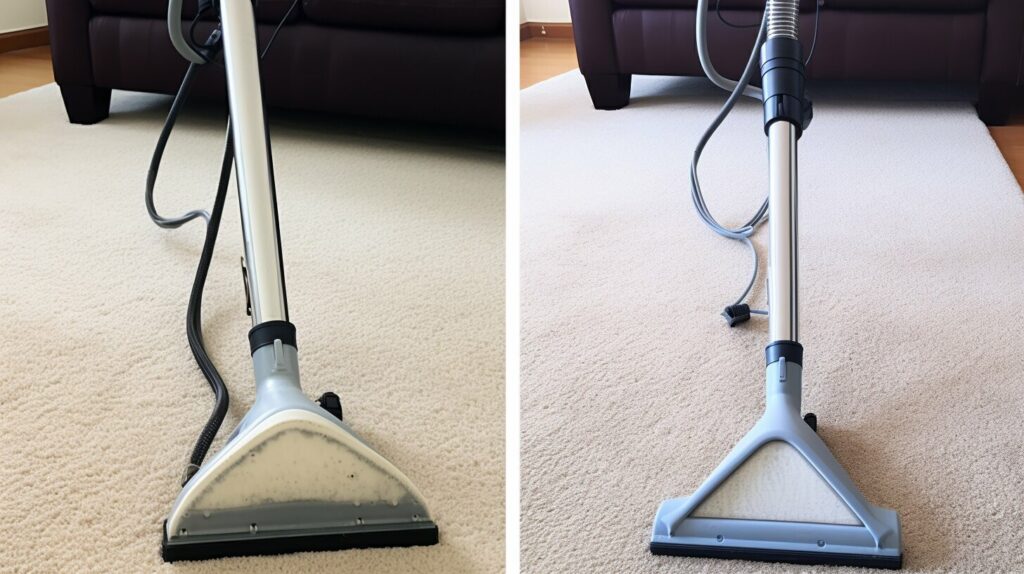
4) Prevent Dents and Crushing (Protect the Pile)
Short answer: spread weight and rotate positions so heavy bedroom furniture doesn’t permanently crease the pile.
Use furniture coasters or sliders under bedposts and dressers to distribute weight. Nudge pieces a few inches every couple of months to vary pressure points. Place an area rug under seating zones to buffer the pile and add texture. For style ideas, explore Cozy Bed Quarters’ guide to
layering and combining rugs.
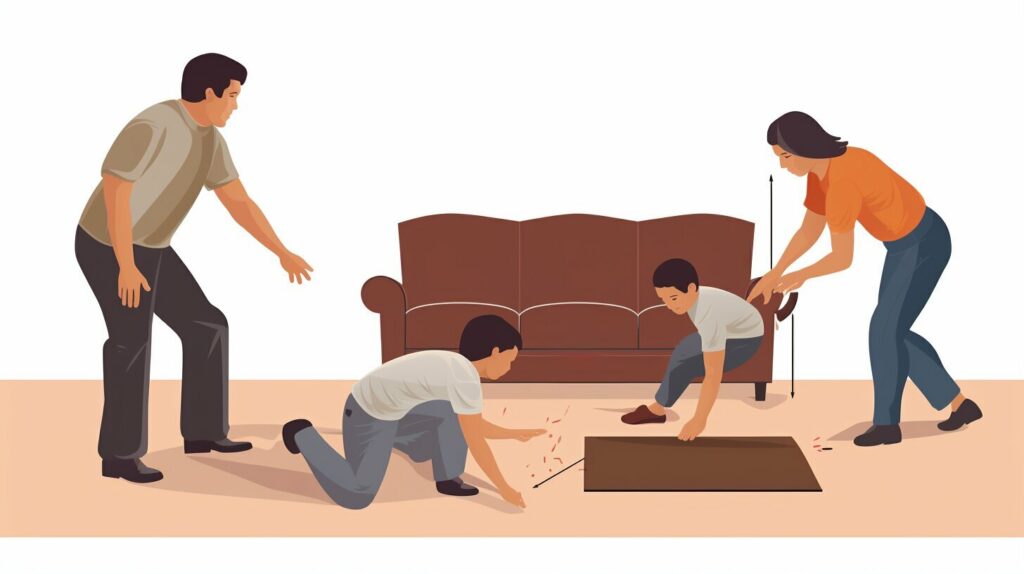
5) Snag and Sprout Care (Trim—Don’t Pull)
Short answer: snip stray loops flush with sharp scissors; pulling can unravel surrounding fibers.
After vacuuming or cleaning, you may notice a few sprouts. Trim them at surface level so they don’t catch on socks or pet claws. If snags cluster in one area, inspect your vacuum height setting and brush roll for rough edges that could be grabbing the pile.
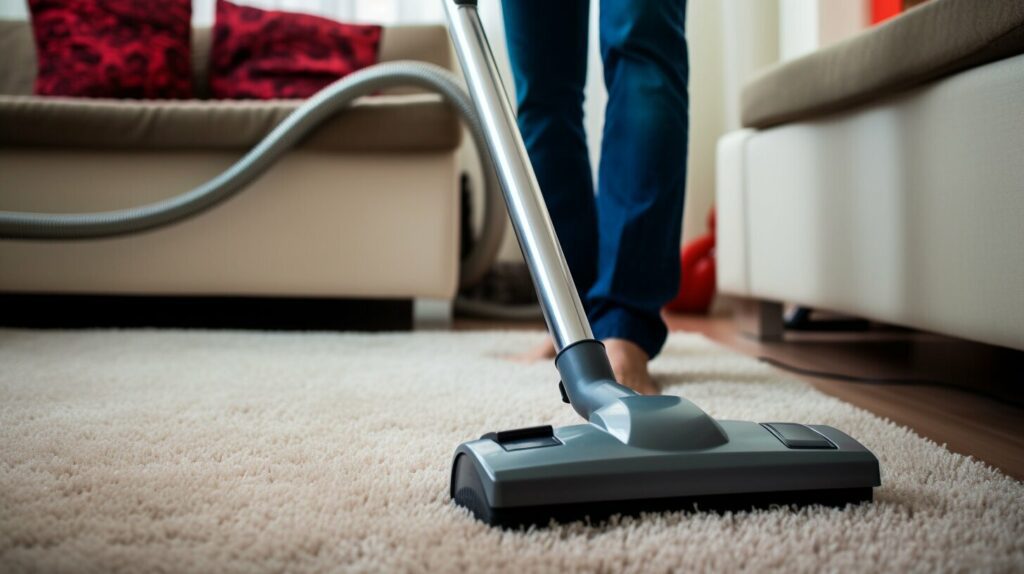
6) Pet Hair Removal (Simple Tools Work Wonders)
Short answer: a rubber squeegee or damp rubber glove gathers clingy fur into easy-to-vacuum clumps.
Even the best pet vacuums miss embedded hairs. Drag a rubber squeegee or lightly dampened glove across the pile to lift fur, then vacuum the clumps. For a broader pet-friendly carpet strategy, review Cozy Bed Quarters’
guide to quality rugs and carpets.
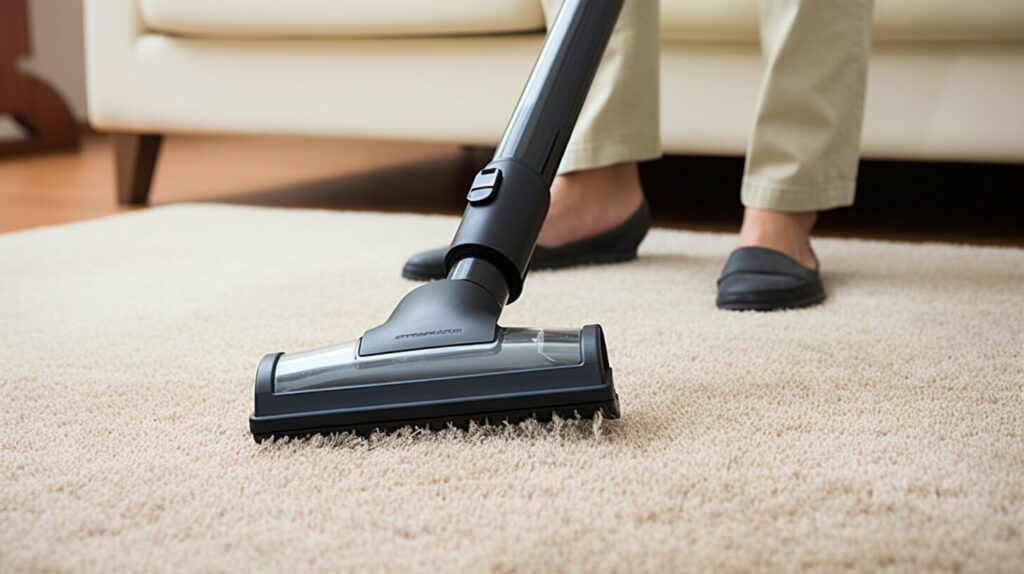
7) Mat and Rug Placement (Catch Dirt Before It Spreads)
Short answer: strategic rugs in front of the bed, closet, and entry slow wear and capture tracked-in grit.
Use low-pile, non-slip rugs in high-traffic paths and at the bedroom entrance. These sacrificial layers catch abrasive dirt that would otherwise grind into carpet. For choosing sizes and materials, see
rug selection tips and bedroom-specific sizing like
perfect rug size for a queen bed.
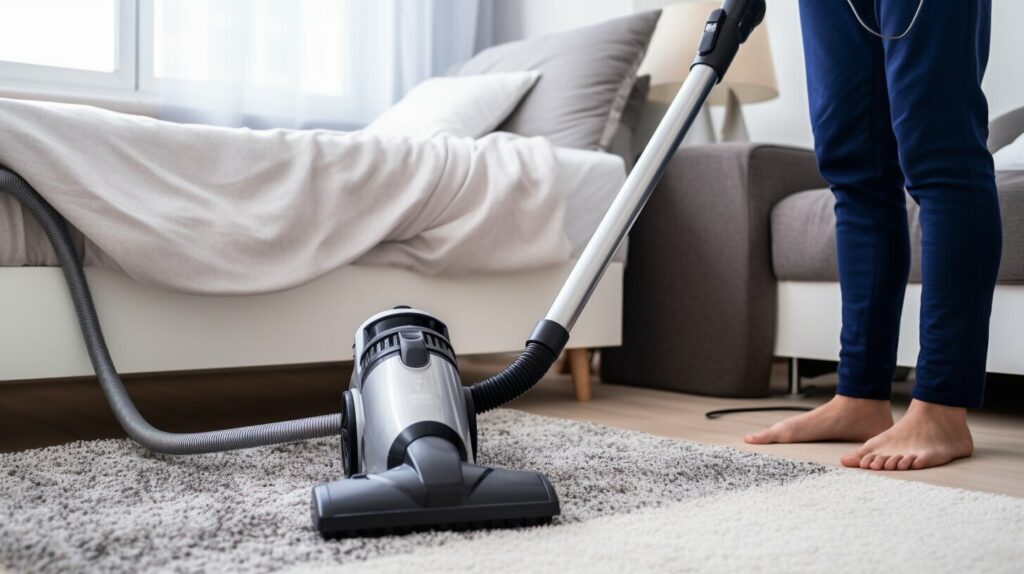
8) Protect from Sun Damage (Fade Control)
Short answer: manage UV exposure with blinds, UV-filtering film, or sheer curtains to keep colors even and rich.
Sunlight fades dyes—often in uneven patches where rays hit hardest. Close blinds during peak hours, install UV-filtering film, or use sheers to diffuse light. Shuffle furniture and rugs quarterly to equalize exposure. For a healthier, sleep-friendly environment overall, see Sleep Foundation’s bedroom guidance
(bedroom environment basics). :contentReference[oaicite:2]{index=2}

9) Build a Simple Cleaning Routine (Make It Automatic)
Short answer: pair weekly vacuuming with monthly spot checks and an annual deep clean so maintenance never piles up.
Use a notes app or calendar reminders: vacuum full room weekly, edges and under-bed monthly, rotate mats quarterly, and schedule a pro clean annually. If you’re upgrading flooring or adding area rugs as part of your routine, browse Cozy Bed Quarters’
bedroom flooring enhancements and the latest
bedroom carpet trends.

10) Eco-Friendly vs. Conventional Carpets (What to Consider)
Short answer: natural and low-VOC options can reduce indoor pollutants, but maintenance still matters most for air quality.
Wool and natural-fiber carpets offer durability and inherent stain resistance, while many synthetics excel in cost and stain-repellent finishes. Ask about VOC-emissions and padding, and ventilate well after installation. Keep moisture under control; the EPA notes water-damaged carpets should be dried within 24 hours or replaced to prevent mold growth
(EPA: Inside Story). :contentReference[oaicite:3]{index=3}

11) Buyer’s Guide & Certifications (Shop Smarter)
Short answer: match pile height and fiber to your lifestyle and look for third-party air-quality standards; then maintain with the routines above.
For low-maintenance bedrooms, medium-pile nylon or triexta balances comfort and resilience; wool offers natural soil resistance and a luxe hand. Choose stain-resistant treatments if you have kids or pets. Pair carpet with a breathable pad and request manufacturer cleaning guidance up front so you don’t void warranties. For area-rug layering, these
rug selection tips and
layering ideas help you build a cozy, durable setup.

FAQ: Care and Maintain Bedroom Carpets Tips
- How often should I vacuum bedroom carpets?
- Vacuum high-traffic lanes two or three times weekly and the entire room at least once a week; hit edges and under furniture monthly.
“`
- What’s the best way to handle a fresh spill?
- Blot immediately with a clean, white cloth, then apply a mild dish-soap solution and continue blotting from the outside in. Avoid harsh scrubbing.
- Is professional carpet cleaning really necessary?
- Yes. Periodic hot-water extraction lifts embedded soil and allergens beyond what vacuums or sprays can remove; schedule every 12–18 months.
- What tools help with pet hair?
- A rubber squeegee or slightly dampened rubber glove gathers hair into clumps for easy pickup; finish with a vacuum pass.
“`
Final Thoughts: Care and Maintain Bedroom Carpets Tips
Treat your carpet like a comfort investment: a few simple habits—smart vacuuming, fast spill response, and routine deep cleaning—protect softness, color, and indoor air quality. Lean on these care and maintain bedroom carpets tips and explore more cozy flooring ideas from Cozy Bed Quarters.

